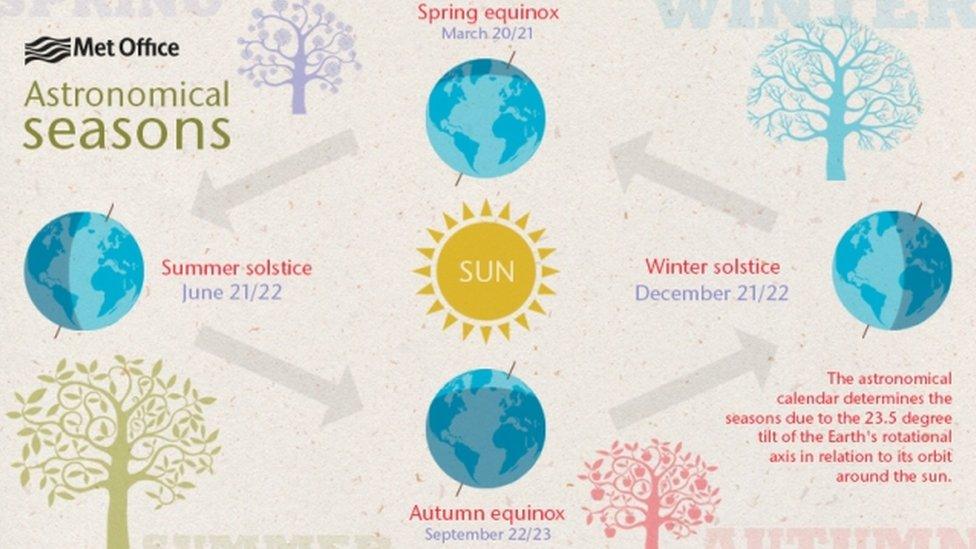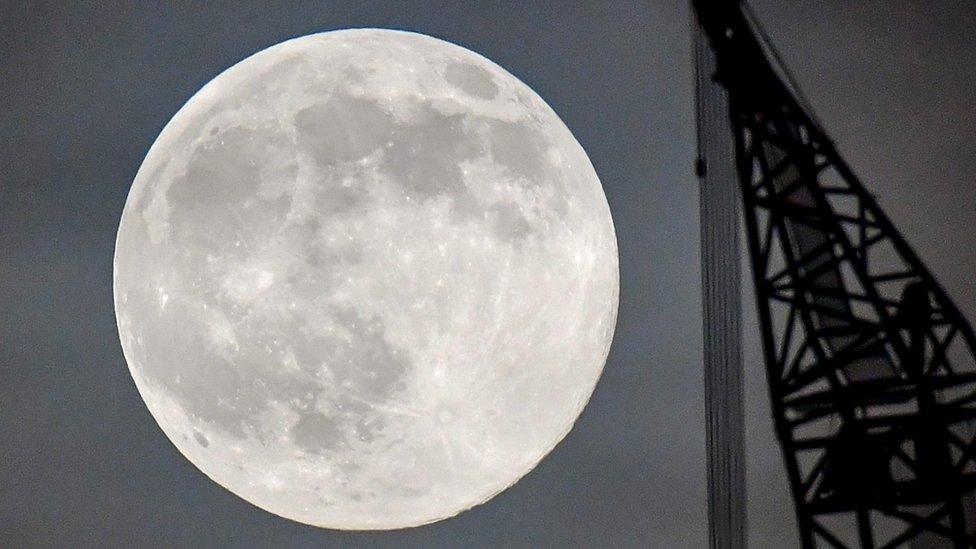Equinox, solstice and equilux: Why are nights and days shorter over the year?
- Published

This diagram can help you to get your head around all the astronomical seasons.
Equinoxes and solstices are key dates in the calendar.
They are used to define the transitional periods between the seasons - when winter changes to spring, summer to autumn and so on.
They are key dates in the journey of the Earth around the Sun.
The position of the Earth in relation to the Sun affects how much daylight we get - or how our long days and nights are.
What is the spring equinox?
Equinox
Equinox is basically the date twice a year when the amount of daylight we get the same as the amount of darkness we get.
This happens when the Sun is lined up exactly above the equator - the imaginary circle around Earth an equal distance from the North and South poles.
Equinox occur twice a year, once around the 20th of March - which is the spring equinox - and again around September the 22nd - known as the autumn equinox.
The word equinox comes from two Latin words, equi which means equal and nox meaning night.
So, from the day of the spring equinox the day is longer than the night and from the day of the autumn equinox the night is longer than the day.
What is the equilux?
The moment when day and night are actually the same length happens a couple of days either side of the equinox.
The moment that this equal amount of daylight and darkness occurs is a few days before the spring equinox, and a few days after the autumn equinox.
This is called the equilux.

What is Solstice?
The Solstice also occurs twice a year.
We have a summer solstice around the 21 June in the Northern Hemisphere and a winter solstice around the 21 December.
The summer solstice is the day when the Northern hemisphere, where the UK sits, has its longest period of daylight all year.
Winter solstice is the day when the Northern Hemisphere experiences its longest period of night all year.
During the summer solstice, the Sun in the middle of the day is at its highest point in the sky of the year. During the Winter solstice this is reversed and the noon sun is at its lowest of the year.
Some far northern countries such as Iceland and Norway experience continuous daylight for months. This is because the Northern Hemisphere is tilted towards the sun, this can also result in increased sunlight and warmer temperatures.
- Published31 December 2023

- Published20 June 2016

